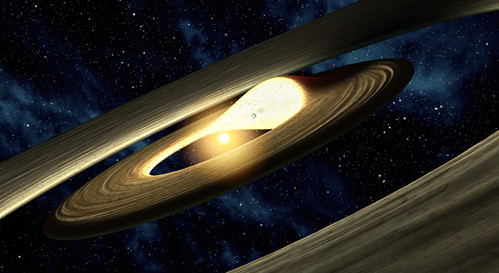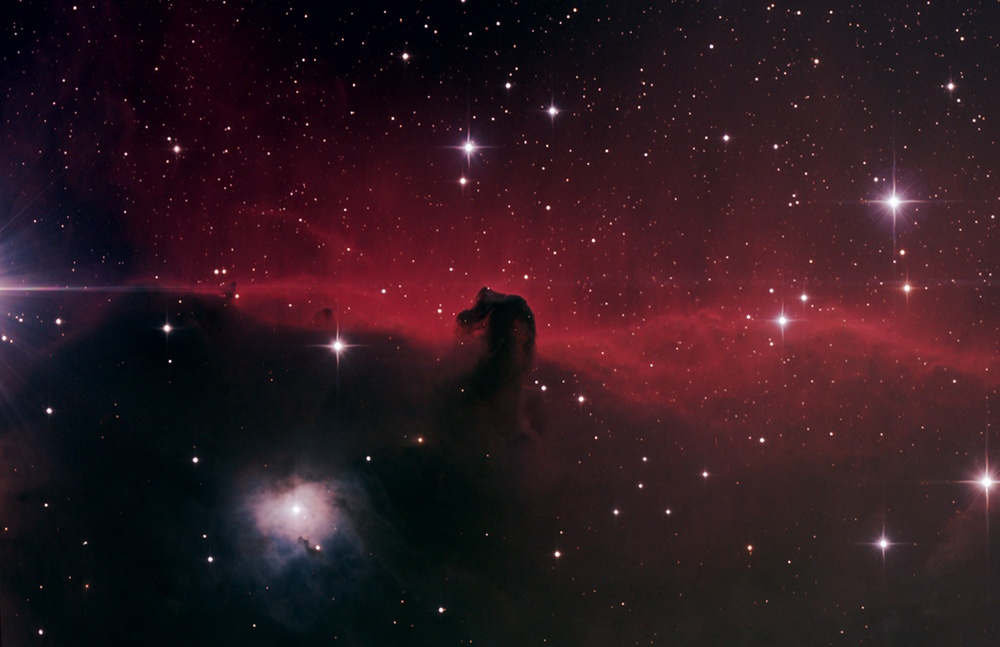1. Bahasa Mandarin
Tak salah lagi, Bahasa Mandarin adalah bahasa yang paling banyak dituturkan orang di seluruh dunia. Jumlah penduduk di China/Tiongkok saat ini diperkirakan hampir mencapai 1,4 milyar juta jiwa. Dari jumlah ini, semuanya diwajibkan bertutur kata resmi dalam satu bahasa yaitu Bahasa Mandarin. Belum lagi, para imigran Tionghoa di berbagai penjuru dunia yang setia menggunakan bahasa Mandarin sebagai bahasa sehari-harinya.
Asal-usul kata Mandarin
Kata mandarin dalam bahasa Indonesia sendiri sepertinya diserap dari bahasa Inggris yang mendeskripsikan bahasa Cina juga sebagai bahasa Mandarin. Namun sebenarnya, kata Mandarin ini diserap bahasa Inggris dari bahasa Cina sendiri. Mandarin secara harfiah berasal dari sebutan orang asing kepada pembesar-pembesar Dinasti Qing di zaman dulu. Dinasti Qing adalah dinasti yang didirikan oleh suku Manchu, sehingga pembesar-pembesar kekaisaran biasanya disebut sebagai Mandaren (Hanzi: 滿大人) yang berarti Yang Mulia Manchu. Dari sini, bahasa yang digunakan oleh para pejabat Manchu waktu itu juga disebut sebagai bahasa Mandaren. Penulisannya berevolusi menjadi Mandarin di kemudian hari.
Jumlah penutur: sekitar 1,5 milyar jiwa.
Jenis aksara: Karakter Cina
Negara penutur: Cina dan komunitas keturunan Cina lainnya di seluruh dunia. Bahasa resmi PBB.
Untuk menyapa dalam bahasa Mandarin, ucapkan "Ni hao" (Nee HaOW)
2. Bahasa Inggris
Nah, ini dia bahasa paling populer di dunia sekaligus bahasa yang paling banyak diadopsi menjadi bahasa resmi di beberapa negara dan organisasi internasional. Tercatat ada 53 negara dan 10 organisasi internasional yang memakai bahasa Inggris sebagai bahasa resmi. Selain itu, hampir semua negara di dunia menerapkan Bahasa Inggris sebagai bahasa kedua setelah bahasa nasionalnya masing-masing.
Jumlah penutur: sekitar 500 juta jiwa
Jenis aksara: Latin
Negara penutur: Inggris Raya, AS, Afrika Selatan, Antigua & Barbuda, Australia, Bahama, Bangladesh, Barbados, Belize, Botswana, Brunei Darussalam, Dominika, Ethiopia, Eritrea, Fiji, Filipina, Gambia, Ghana, Grenada, Guyana, Hong Kong, India, Irlandia, Jamaika, Kamerun, Kanada, Kenya, Kiribati, Lesotho, Liberia, Malawi, Maladewa, Malta, Marshall Kepulauan, Maritius, Micronesia, Namibia, Nauru, Nigeria, Pakistan, Palau, Papua Nugini, Rwanda, Saint Kitts & Nevs, Saint Lucia, Saint Vincent & Grenada, Samoa, Selandia Baru, Seychelles, Sierra Leone, Singapura, Solomon Kepulauan, Somalia, Sri Lanka, Swaziland, Tanzania, Tonga, Trinidad & Tobago, Tuvalu, Uganda, Vanuatu, Zambia, Zimbabwe. Organisasi Internasional: PBB, Uni Eropa, Persemakmuran, CoE, NATO, NAFTA, OAS, OIC, PIF, UKUSA, dll
3. Bahasa Hindi
India memang unik! Bayangkan saja, negara ini punya penduduk terbanyak kedua di dunia, film-film Bollywood, Taj Mahal, Raja Asoka yang Agung, Mahatma Gandhi.... ehh, ternyata India tidak memiliki bahasa nasional resmi. Bahasa Hindi yang dituturkan oleh sebagian besar masyarakat India hanya diakui sebagai bahasa resmi sehari-hari bersama bahasa Inggris dan bukan sebagai bahasa nasional oleh konsitusinya.
Jumlah penutur: sekitar 497 juta
Jenis aksara: Devanagari
Negara penutur: India, AS (100.000 jiwa), Mauritius (685.170 jiwa), Afrika Selatan (890.292), Yaman (232.760 jiwa), Uganda (147.000 jiwa), Singapura (5.000 jiwa), Selandia Baru (20.000 jiwa), Jerman (30.000 jiwa), Fiji, Nepal, Suriname, Trinidad & Tobago, Guyana dan Uni Emirat Arab.
Untuk menyapa dalam bahasa Hindi, ucapkan “Namaste” (Nah-MAH-stay).
4. Bahasa Spanyol
Setelah Portugal menguasai jalur-jalur maritim di Asia, Afrika dan Amerika pada abad ke 15, gantian Spanyol yang mendominasi wilayah-wilayah tersebut sejak abad ke 16 dan 17. Akibatnya, banyak kebudayaan Spanyol yang tertancap kuat di sana. Saat ini, Bahasa Spanyol banyak dipakai sebagai bahasa resmi negara-negara di Amerika Tengah dan Selatan. Selain itu, bahasa Spanyol juga banyak dituturkan di beberapa negara bagian Amerika Serikat yang berbatasan dengan Meksiko. Bahkan beberapa kosa kata bahasa Inggris dipinjam dari bahasa Spanyol seperti tornado, bonanza, patio, quesadilla, Enchilada, dan taco grande supreme, dll.
Jumlah penutur: sekitar 400 juta
Jenis aksara: Latin
Negara penutur: Spanyol, Argentina, Bolivia, Chile, Dominican Republic, Ecuador, El Salvador, Guinea Katulistiwa, Guatemala, Honduras, Kolombia, Kosta Rika, Kuba, Mexico, Nikaragua, Panama, Paraguay, Peru, Puerto Rico, Uruguay, Venezuela
Untuk menyapa dalam bahasa Spanyol, ucapkan: “Hola”.
5. Bahasa Arab
Bahasa Arab adalah salah satu bahasa tertua di dunia dan merupakan bahasa yang digunakan dalam Al Qur’an. Bahasa Arab banyak meminjamkan kosa katanya ke sejumlah bahasa di Eropa utamanya bahasa Spanyol, Portugis dan Sisilia. Bahasa Arab, seperti juga bahasa Ibrani dan Persia memakai sistem penulisan aksara dari kanan ke kiri. Sejak tahun 1974, bahasa Arab digunakan sebagai salah satu bahasa resmi di PBB.
Jumlah penutur: sekitar 300 juta orang
Jenis aksara: Arab
Negara penutur: Arab Saudi, Aljazair, Bahrain, Chad, Komoro, Djibouti, Mesir, Eritrea, Irak, Israel, Yordania, Kuwait, Lebanon, Libya, Maroko, Niger, Oman, Palestina, Qatar, Somalia, Sudan, Syria, Tunisia, Uni Emirat Arab, Sahara Barat, Yaman, Mauritania, Senegal, Mali. Bahasa resmi PBB
Untuk menyapa dalam bahasa Arab, ucapkan; Assalammualaikum Wr Wb.
6. Bahasa Rusia
Mikhail Gorbachev, Vladimir Putin, Roman Abramovich, Anna Kournikova, dan si cantik Maria Sharapova adalah para penutur bahasa Rusia yang kita sudah kenal lewat berbagai pemberitaan media. Namun, selain mereka tentu saja ada 270-an juta orang lainnya yang menggunakan bahasa Rusia sebagai bahasa resmi.
Jumlah penutur: sekitar 278 juta jiwa
Jenis aksara: Cyrillic
Negara penutur: Rusia, Belarusia, Kazakhstan, Kyrgyzstan, Moldova. Bahasa resmi PBB
Untuk menyapa dalam bahasa Rusia, ucapkan: “Zdravstvuite” (ZDRAST-vet-yah).
7. Bahasa Melayu (termasuk Bahasa Indonesia)
Nah, ini dia yang ditunggu-tunggu... Bahasa Indonesia yang termasuk dalam rumpun bahasa Melayu ternyata berada pada urutan ke 7 dengan jumlah penutur sekitar 259 juta orang. Hitungan kasar ini didapatkan dari perkiraan jumlah penduduk Indonesia tahun 2009 yang mencapai 230 juta jiwa ditambah penduduk Malaysia 28 juta, penduduk Brunei 388 ribu serta sebagian kecil penduduk Thailand, Singapura dan Timor Timur. Jumlah ini mungkin bisa bertambah karena sejak tahun 2007 Bahasa Indonesia telah ditetapkan sebagai bahasa resmi kedua di Vietnam.
Fakta menarik tentang bahasa Indonesia:
Bahasa Indonesia menduduki peringkat 3 di Asia dan peringkat ke 26 di dunia dalam hal Tata bahasa terumit di dunia.
Bahasa Indonesia juga mendunia di dunia maya, buktinya wikipedia berbahasa Indonesia telah menduduki peringkat 26 dari 250 wikipedia berbahasa asing di dunia dan peringkat 3 di Asia setelah bahasa Jepang dan Mandarin, selain itu bahasa Indonesia menjadi bahasa ke 3 yang paling banyak digunakan dalam postingan blog di wordpress.
8. Bahasa Portugis
Portugal memang hanyalah sebuah negara yang kecil dan bisa dikatakan salah satu negara miskin di Eropa. Namun pada abad ke 15, Portugal merupakan bangsa yang besar karena merekalah yang pertama-tama melakukan penjelajahan maritim ke berbagai penjuru dunia. Berkat jasa para penjelajah seperti Vasco da Gama, Henry the Navigator, Afonso de Albuquerque dan Pedro Álvares Cabral, Portugal menguasai wilayah-wilayah penting di Asia, Afrika dan Amerika Selatan dan kemudian menanamkan pengaruh kebudayaannya di sana.
Jumlah penutur: sekitar 240 juta jiwa
Jenis Aksara: Latin
Negara Penutur: Portugal, Brazil, Angola, Cape Verde, Timor Timur, Guinea-Bissau, Makau, Mozambique, São Tomé e Príncipe.
Untuk menyapa dalam bahasa Portugis, ucapkan: “Bom dia” (Bohn DEE-ah).
9. Bahasa Bengali
Bangladesh adalah sebuah negara dengan wilayah geografis yang kecil, tapi jumlah penduduknya mencapai 162 juta orang. Bahasa resmi Bangladesh adalah Bahasa Bengali. Karena wilayah Bangladesh hampir seluruhnya berbatasan dengan India maka jumlah penutur bahasa Bengali meluas hingga ke beberapa wilayah India.
Jumlah penutur: Sekitar 230 juta jiwa
Jenis Aksara: Bengali
Negara Penutur: Bangladesh, India
Untuk menyapa dalam bahasa Bengali, katakan “Ei Je” (EYE-jay).
10. Bahasa Perancis
Bahasa yang sering disebut-sebut sebagai bahasa paling romantis di dunia ini selain digunakan di Perancis juga menjadi bahasa resmi di beberapa negara yang pernah dijajahnya. Bahasa Perancis juga adalah salah satu bahasa resmi di Perserikatan Bangsa-bangsa (PBB) selain bahasa Inggris, Mandarin, Rusia, Spanyol dan Arab.
Jumlah penutur: sekitar 200 juta jiwa
Jenis Aksara: Latin
Negara Penutur: Perancis, Monaco, Kanada, Swiss, Belgia, Luxemburg, Benin, Burkina Faso, Burundi, Kamerun, Afrika Tengah, Chad, Komoro, Kongo/Zaire, Pantai Gading, Djibouti, Guinea, Guinea Katulistiwa, Gabon, Guernsey, Madagaskar, Mali, Mauritius, Niger, Rwanda, Senegal, Seychelles, Togo, Haiti, Lebanon, Kaledonia Baru, Vanuatu. Polynesia, Martinique, Guadalupe. Bahasa resmi PBB.
Untuk menyapa dalam bahasa Perancis, ucapkan: "Bonjour" (bone-JOOR).
Tak salah lagi, Bahasa Mandarin adalah bahasa yang paling banyak dituturkan orang di seluruh dunia. Jumlah penduduk di China/Tiongkok saat ini diperkirakan hampir mencapai 1,4 milyar juta jiwa. Dari jumlah ini, semuanya diwajibkan bertutur kata resmi dalam satu bahasa yaitu Bahasa Mandarin. Belum lagi, para imigran Tionghoa di berbagai penjuru dunia yang setia menggunakan bahasa Mandarin sebagai bahasa sehari-harinya.
Asal-usul kata Mandarin
Kata mandarin dalam bahasa Indonesia sendiri sepertinya diserap dari bahasa Inggris yang mendeskripsikan bahasa Cina juga sebagai bahasa Mandarin. Namun sebenarnya, kata Mandarin ini diserap bahasa Inggris dari bahasa Cina sendiri. Mandarin secara harfiah berasal dari sebutan orang asing kepada pembesar-pembesar Dinasti Qing di zaman dulu. Dinasti Qing adalah dinasti yang didirikan oleh suku Manchu, sehingga pembesar-pembesar kekaisaran biasanya disebut sebagai Mandaren (Hanzi: 滿大人) yang berarti Yang Mulia Manchu. Dari sini, bahasa yang digunakan oleh para pejabat Manchu waktu itu juga disebut sebagai bahasa Mandaren. Penulisannya berevolusi menjadi Mandarin di kemudian hari.
Jumlah penutur: sekitar 1,5 milyar jiwa.
Jenis aksara: Karakter Cina
Negara penutur: Cina dan komunitas keturunan Cina lainnya di seluruh dunia. Bahasa resmi PBB.
Untuk menyapa dalam bahasa Mandarin, ucapkan "Ni hao" (Nee HaOW)
2. Bahasa Inggris
Nah, ini dia bahasa paling populer di dunia sekaligus bahasa yang paling banyak diadopsi menjadi bahasa resmi di beberapa negara dan organisasi internasional. Tercatat ada 53 negara dan 10 organisasi internasional yang memakai bahasa Inggris sebagai bahasa resmi. Selain itu, hampir semua negara di dunia menerapkan Bahasa Inggris sebagai bahasa kedua setelah bahasa nasionalnya masing-masing.
Jumlah penutur: sekitar 500 juta jiwa
Jenis aksara: Latin
Negara penutur: Inggris Raya, AS, Afrika Selatan, Antigua & Barbuda, Australia, Bahama, Bangladesh, Barbados, Belize, Botswana, Brunei Darussalam, Dominika, Ethiopia, Eritrea, Fiji, Filipina, Gambia, Ghana, Grenada, Guyana, Hong Kong, India, Irlandia, Jamaika, Kamerun, Kanada, Kenya, Kiribati, Lesotho, Liberia, Malawi, Maladewa, Malta, Marshall Kepulauan, Maritius, Micronesia, Namibia, Nauru, Nigeria, Pakistan, Palau, Papua Nugini, Rwanda, Saint Kitts & Nevs, Saint Lucia, Saint Vincent & Grenada, Samoa, Selandia Baru, Seychelles, Sierra Leone, Singapura, Solomon Kepulauan, Somalia, Sri Lanka, Swaziland, Tanzania, Tonga, Trinidad & Tobago, Tuvalu, Uganda, Vanuatu, Zambia, Zimbabwe. Organisasi Internasional: PBB, Uni Eropa, Persemakmuran, CoE, NATO, NAFTA, OAS, OIC, PIF, UKUSA, dll
3. Bahasa Hindi
India memang unik! Bayangkan saja, negara ini punya penduduk terbanyak kedua di dunia, film-film Bollywood, Taj Mahal, Raja Asoka yang Agung, Mahatma Gandhi.... ehh, ternyata India tidak memiliki bahasa nasional resmi. Bahasa Hindi yang dituturkan oleh sebagian besar masyarakat India hanya diakui sebagai bahasa resmi sehari-hari bersama bahasa Inggris dan bukan sebagai bahasa nasional oleh konsitusinya.
Jumlah penutur: sekitar 497 juta
Jenis aksara: Devanagari
Negara penutur: India, AS (100.000 jiwa), Mauritius (685.170 jiwa), Afrika Selatan (890.292), Yaman (232.760 jiwa), Uganda (147.000 jiwa), Singapura (5.000 jiwa), Selandia Baru (20.000 jiwa), Jerman (30.000 jiwa), Fiji, Nepal, Suriname, Trinidad & Tobago, Guyana dan Uni Emirat Arab.
Untuk menyapa dalam bahasa Hindi, ucapkan “Namaste” (Nah-MAH-stay).
4. Bahasa Spanyol
Setelah Portugal menguasai jalur-jalur maritim di Asia, Afrika dan Amerika pada abad ke 15, gantian Spanyol yang mendominasi wilayah-wilayah tersebut sejak abad ke 16 dan 17. Akibatnya, banyak kebudayaan Spanyol yang tertancap kuat di sana. Saat ini, Bahasa Spanyol banyak dipakai sebagai bahasa resmi negara-negara di Amerika Tengah dan Selatan. Selain itu, bahasa Spanyol juga banyak dituturkan di beberapa negara bagian Amerika Serikat yang berbatasan dengan Meksiko. Bahkan beberapa kosa kata bahasa Inggris dipinjam dari bahasa Spanyol seperti tornado, bonanza, patio, quesadilla, Enchilada, dan taco grande supreme, dll.
Jumlah penutur: sekitar 400 juta
Jenis aksara: Latin
Negara penutur: Spanyol, Argentina, Bolivia, Chile, Dominican Republic, Ecuador, El Salvador, Guinea Katulistiwa, Guatemala, Honduras, Kolombia, Kosta Rika, Kuba, Mexico, Nikaragua, Panama, Paraguay, Peru, Puerto Rico, Uruguay, Venezuela
Untuk menyapa dalam bahasa Spanyol, ucapkan: “Hola”.
5. Bahasa Arab
Bahasa Arab adalah salah satu bahasa tertua di dunia dan merupakan bahasa yang digunakan dalam Al Qur’an. Bahasa Arab banyak meminjamkan kosa katanya ke sejumlah bahasa di Eropa utamanya bahasa Spanyol, Portugis dan Sisilia. Bahasa Arab, seperti juga bahasa Ibrani dan Persia memakai sistem penulisan aksara dari kanan ke kiri. Sejak tahun 1974, bahasa Arab digunakan sebagai salah satu bahasa resmi di PBB.
Jumlah penutur: sekitar 300 juta orang
Jenis aksara: Arab
Negara penutur: Arab Saudi, Aljazair, Bahrain, Chad, Komoro, Djibouti, Mesir, Eritrea, Irak, Israel, Yordania, Kuwait, Lebanon, Libya, Maroko, Niger, Oman, Palestina, Qatar, Somalia, Sudan, Syria, Tunisia, Uni Emirat Arab, Sahara Barat, Yaman, Mauritania, Senegal, Mali. Bahasa resmi PBB
Untuk menyapa dalam bahasa Arab, ucapkan; Assalammualaikum Wr Wb.
6. Bahasa Rusia
Mikhail Gorbachev, Vladimir Putin, Roman Abramovich, Anna Kournikova, dan si cantik Maria Sharapova adalah para penutur bahasa Rusia yang kita sudah kenal lewat berbagai pemberitaan media. Namun, selain mereka tentu saja ada 270-an juta orang lainnya yang menggunakan bahasa Rusia sebagai bahasa resmi.
Jumlah penutur: sekitar 278 juta jiwa
Jenis aksara: Cyrillic
Negara penutur: Rusia, Belarusia, Kazakhstan, Kyrgyzstan, Moldova. Bahasa resmi PBB
Untuk menyapa dalam bahasa Rusia, ucapkan: “Zdravstvuite” (ZDRAST-vet-yah).
7. Bahasa Melayu (termasuk Bahasa Indonesia)
Nah, ini dia yang ditunggu-tunggu... Bahasa Indonesia yang termasuk dalam rumpun bahasa Melayu ternyata berada pada urutan ke 7 dengan jumlah penutur sekitar 259 juta orang. Hitungan kasar ini didapatkan dari perkiraan jumlah penduduk Indonesia tahun 2009 yang mencapai 230 juta jiwa ditambah penduduk Malaysia 28 juta, penduduk Brunei 388 ribu serta sebagian kecil penduduk Thailand, Singapura dan Timor Timur. Jumlah ini mungkin bisa bertambah karena sejak tahun 2007 Bahasa Indonesia telah ditetapkan sebagai bahasa resmi kedua di Vietnam.
Fakta menarik tentang bahasa Indonesia:
Bahasa Indonesia menduduki peringkat 3 di Asia dan peringkat ke 26 di dunia dalam hal Tata bahasa terumit di dunia.
Bahasa Indonesia juga mendunia di dunia maya, buktinya wikipedia berbahasa Indonesia telah menduduki peringkat 26 dari 250 wikipedia berbahasa asing di dunia dan peringkat 3 di Asia setelah bahasa Jepang dan Mandarin, selain itu bahasa Indonesia menjadi bahasa ke 3 yang paling banyak digunakan dalam postingan blog di wordpress.
8. Bahasa Portugis
Portugal memang hanyalah sebuah negara yang kecil dan bisa dikatakan salah satu negara miskin di Eropa. Namun pada abad ke 15, Portugal merupakan bangsa yang besar karena merekalah yang pertama-tama melakukan penjelajahan maritim ke berbagai penjuru dunia. Berkat jasa para penjelajah seperti Vasco da Gama, Henry the Navigator, Afonso de Albuquerque dan Pedro Álvares Cabral, Portugal menguasai wilayah-wilayah penting di Asia, Afrika dan Amerika Selatan dan kemudian menanamkan pengaruh kebudayaannya di sana.
Jumlah penutur: sekitar 240 juta jiwa
Jenis Aksara: Latin
Negara Penutur: Portugal, Brazil, Angola, Cape Verde, Timor Timur, Guinea-Bissau, Makau, Mozambique, São Tomé e Príncipe.
Untuk menyapa dalam bahasa Portugis, ucapkan: “Bom dia” (Bohn DEE-ah).
9. Bahasa Bengali
Bangladesh adalah sebuah negara dengan wilayah geografis yang kecil, tapi jumlah penduduknya mencapai 162 juta orang. Bahasa resmi Bangladesh adalah Bahasa Bengali. Karena wilayah Bangladesh hampir seluruhnya berbatasan dengan India maka jumlah penutur bahasa Bengali meluas hingga ke beberapa wilayah India.
Jumlah penutur: Sekitar 230 juta jiwa
Jenis Aksara: Bengali
Negara Penutur: Bangladesh, India
Untuk menyapa dalam bahasa Bengali, katakan “Ei Je” (EYE-jay).
10. Bahasa Perancis
Bahasa yang sering disebut-sebut sebagai bahasa paling romantis di dunia ini selain digunakan di Perancis juga menjadi bahasa resmi di beberapa negara yang pernah dijajahnya. Bahasa Perancis juga adalah salah satu bahasa resmi di Perserikatan Bangsa-bangsa (PBB) selain bahasa Inggris, Mandarin, Rusia, Spanyol dan Arab.
Jumlah penutur: sekitar 200 juta jiwa
Jenis Aksara: Latin
Negara Penutur: Perancis, Monaco, Kanada, Swiss, Belgia, Luxemburg, Benin, Burkina Faso, Burundi, Kamerun, Afrika Tengah, Chad, Komoro, Kongo/Zaire, Pantai Gading, Djibouti, Guinea, Guinea Katulistiwa, Gabon, Guernsey, Madagaskar, Mali, Mauritius, Niger, Rwanda, Senegal, Seychelles, Togo, Haiti, Lebanon, Kaledonia Baru, Vanuatu. Polynesia, Martinique, Guadalupe. Bahasa resmi PBB.
Untuk menyapa dalam bahasa Perancis, ucapkan: "Bonjour" (bone-JOOR).
Sumber : Kaskus.us































